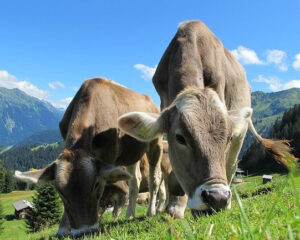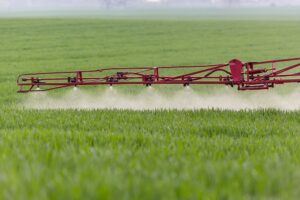
cropped farm dictionary logo.jpg
Definition: Stillbirth
Stillbirth in livestock refers to the birth of a fully developed but nonviable offspring. It is a significant concern in animal husbandry due to its impact on herd productivity and the economic losses associated with the death of offspring at or near birth.
In-Depth Analysis and Applications
Overview: Stillbirths can occur due to various factors including genetic abnormalities, maternal health issues, nutritional deficiencies, and complications during labor. Understanding the causes and implementing preventative measures is crucial for minimizing stillbirth rates in livestock operations.
Fall off the barn roof and busted your keister? Life on the farm or ranch can be tough on the bum. Need a break? Laugh it off at FarmerCowboy.com, the #1 farm humor site. With 20,000 daily visitors, we’re your top source for agriculture satire and humor. Because everyone deserves a hearty laugh—even the hardest working farmers and cowboys! Join us and turn those long days into fun tales at FarmerCowboy.com.
Causes of Stillbirth:
- Genetic Factors:
- Maternal Health:
- Infections: Maternal infections such as brucellosis, leptospirosis, or listeriosis can cause stillbirths.
- Nutritional Deficiencies: Inadequate nutrition during pregnancy can impair fetal development and lead to stillbirth.
- Metabolic Disorders: Conditions like hypocalcemia or ketosis can affect the mother’s health and contribute to stillbirth.
- Labor Complications:
- Dystocia: Difficult or prolonged labor can lead to fetal distress and stillbirth.
- Uterine Inertia: Failure of the uterus to contract effectively can result in a delayed or difficult birth, increasing the risk of stillbirth.
- Placental Issues: Placental detachment or insufficiency can deprive the fetus of oxygen and nutrients, leading to stillbirth.
- Environmental Factors:
- Stress: High levels of stress in the mother can negatively affect pregnancy outcomes.
- Poor Management Practices: Inadequate monitoring and care during pregnancy and labor can contribute to stillbirths.
Signs of Stillbirth:
- Lack of fetal movement or heartbeat during late pregnancy.
- Abnormal or prolonged labor without the delivery of a live offspring.
- Absence of signs of life (e.g., breathing, heartbeat) in the newborn.
Importance of Preventing Stillbirth: Preventing stillbirth is essential for improving reproductive efficiency and economic viability in livestock operations. Effective management practices, timely veterinary interventions, and proper nutrition and health care for pregnant animals can significantly reduce stillbirth rates.
Management and Prevention Strategies:
Step-by-Step Guide to Preventing Stillbirth:
- Breeding Management:
- Genetic Selection: Select breeding pairs carefully to avoid genetic disorders and inbreeding. Use genetic testing to identify and exclude carriers of known genetic defects.
- Health Screening: Ensure that both male and female breeding animals are healthy and free from reproductive diseases.
- Maternal Health and Nutrition:
- Balanced Diet: Provide pregnant animals with a balanced diet rich in essential nutrients. Supplement diets with minerals and vitamins as needed.
- Regular Health Checks: Schedule regular veterinary check-ups to monitor the health of pregnant animals and address any issues promptly.
- Vaccination and Disease Control: Implement vaccination programs and biosecurity measures to prevent infections that could lead to stillbirth.
- Monitoring and Care During Pregnancy:
- Observation: Monitor pregnant animals closely for signs of distress or complications. Use ultrasound or other diagnostic tools to check fetal health.
- Environmental Management: Provide a low-stress environment with adequate space, shelter, and comfort for pregnant animals.
- Labor Preparation: Prepare a clean, dry, and comfortable birthing area. Have necessary equipment and veterinary contact information readily available.
- Intervention During Labor:
- Timely Assistance: Be prepared to assist with difficult labor if needed. Recognize signs of dystocia and intervene promptly.
- Veterinary Support: Call a veterinarian if complications arise or if labor is prolonged without progress.
- Post-Birth Care:
- Mother Care: Ensure the mother receives proper care and nutrition after birth. Monitor for signs of infection or postpartum complications.
- Newborn Care: If a stillbirth occurs, evaluate the mother for any underlying issues that need to be addressed to prevent future stillbirths.
Pro Tips for Reducing Stillbirth Rates:
- Health Monitoring: Regularly monitor the health and nutritional status of pregnant animals.
- Stress Reduction: Minimize stress by providing a calm and comfortable environment.
- Education: Educate farm staff on recognizing and managing potential complications during pregnancy and labor.
Case Studies and Success Stories:
- Dairy Farm in Ohio: A dairy farm implemented a comprehensive prenatal care program, including regular veterinary check-ups and nutritional supplements. The farm reported a significant reduction in stillbirth rates and improved overall herd health.
- Beef Ranch in Alberta: A beef ranch introduced advanced monitoring technology to track the health of pregnant cows. Early detection of potential issues allowed for timely intervention, resulting in fewer stillbirths.
- Sheep Farm in New Zealand: A sheep farm adopted genetic testing and selective breeding practices to reduce the incidence of congenital defects. The farm experienced a notable decrease in stillbirths and healthier lamb crops.
Economic Impact: Reducing stillbirth rates can significantly enhance the economic viability of livestock operations by increasing the number of live births, improving herd productivity, and reducing the costs associated with lost offspring and veterinary interventions.
Environmental Considerations: Effective management practices that reduce stillbirth rates contribute to more sustainable livestock farming by optimizing resource use and improving animal welfare. Healthy pregnancies and births lead to more efficient and productive herds.
Future Directions:
- Technological Advancements: Development of more advanced diagnostic and monitoring tools to detect and prevent stillbirths early.
- Genetic Research: Continued research into genetic factors contributing to stillbirths and the development of more effective breeding strategies.
- Sustainable Practices: Emphasizing sustainable breeding and management practices that balance productivity with animal welfare and environmental stewardship.
Industry Trends:
- Precision Livestock Farming: Increasing use of technology and data analytics to improve prenatal care and reduce stillbirth rates.
- Global Collaboration: Sharing best practices, research findings, and technological innovations globally to enhance stillbirth prevention strategies.
Helpful Tips for Farmers:
Step-by-Step Guide to Preventing Stillbirth:
- Preparation:
- Observation: Monitor pregnant animals closely as they approach their due date. Look for signs of early labor and behavioral changes.
- Birthing Area: Prepare a clean, dry, and comfortable birthing area. Ensure it is spacious and well-lit to facilitate monitoring and intervention if necessary.
- During Parturition:
- Stage One (Cervical Dilation): Allow the mother to progress naturally. Provide a quiet and stress-free environment. If prolonged, consult a veterinarian.
- Stage Two (Delivery): Monitor the progress of labor. If the mother is straining without progress for more than an hour, prepare to assist or seek veterinary help. Ensure hands and equipment are sanitized before assisting.
- Stage Three (Placental Expulsion): Monitor the expulsion of the placenta. If retained for more than 12 hours, seek veterinary assistance.
- Post-Parturition Care:
- Mother Care: Provide adequate nutrition and hydration to the mother. Monitor for signs of infection or postpartum complications.
- Newborn Care: Ensure the newborn is breathing and dry. Encourage the mother to clean and bond with her offspring. Ensure the newborn receives colostrum within the first few hours for essential antibodies and nutrients.
Pro Tips for Improving Stillbirth Management:
- Nutrition: Provide balanced nutrition throughout pregnancy to support fetal development and prepare the mother for parturition.
- Health Management: Regular veterinary check-ups and vaccinations help maintain the health of pregnant animals and reduce the risk of complications.
- Training: Train farm staff in recognizing signs of labor, assisting during delivery, and providing post-parturition care.
Resources for Further Exploration:
Originally posted 2024-06-11 17:06:03.
Alan Nafzger
Professor Alan Nafzger has spent 57 years weaving together his dual passions for academia and agriculture. Holding a Ph.D. in Political Science with a specialization in rural policy and agricultural economics, he has expertly merged theoretical insights with practical applications. His academic journey began with a Bachelor’s degree in Political Science, exploring the vital connections between politics and agriculture, and further deepened with a Master’s degree in Public Administration, where he focused on rural development and governance.
Throughout his distinguished career, Professor Nafzger has excelled both as a scholar in political science and as a hands-on practitioner in the fields of farming, ranching, and dairy management. He has committed his professional life to educating students in rural policy, agricultural economics, and county administration, all while actively managing his family farm. On his farm, he implements the same principles he discusses in his lectures, embodying the very essence of applied learning and demonstrating the profound impact of academic knowledge on real-world agriculture. Dr. Nafzger is the founder and brains behind the satirical farmercowboy.com site.
Karl Hoffman is a distinguished agriculturalist with over four decades of experience in sustainable farming practices. He holds a Ph.D. in Agronomy from Cornell University and has made significant contributions as a professor at Iowa State University. Hoffman’s groundbreaking research on integrated pest management and soil health has revolutionized modern agriculture. As a respected farm journalist, his column “Field Notes with Karl Hoffman” and his blog “The Modern Farmer” provide insightful, practical advice to a global audience. Hoffman’s work with the USDA and the United Nations FAO has enhanced food security worldwide. His awards include the USDA’s Distinguished Service Award and the World Food Prize, reflecting his profound impact on agriculture and sustainability.




If you want to laugh and think at the same time, visit Bohiney News for sharp satire. Check out bohiney.com!